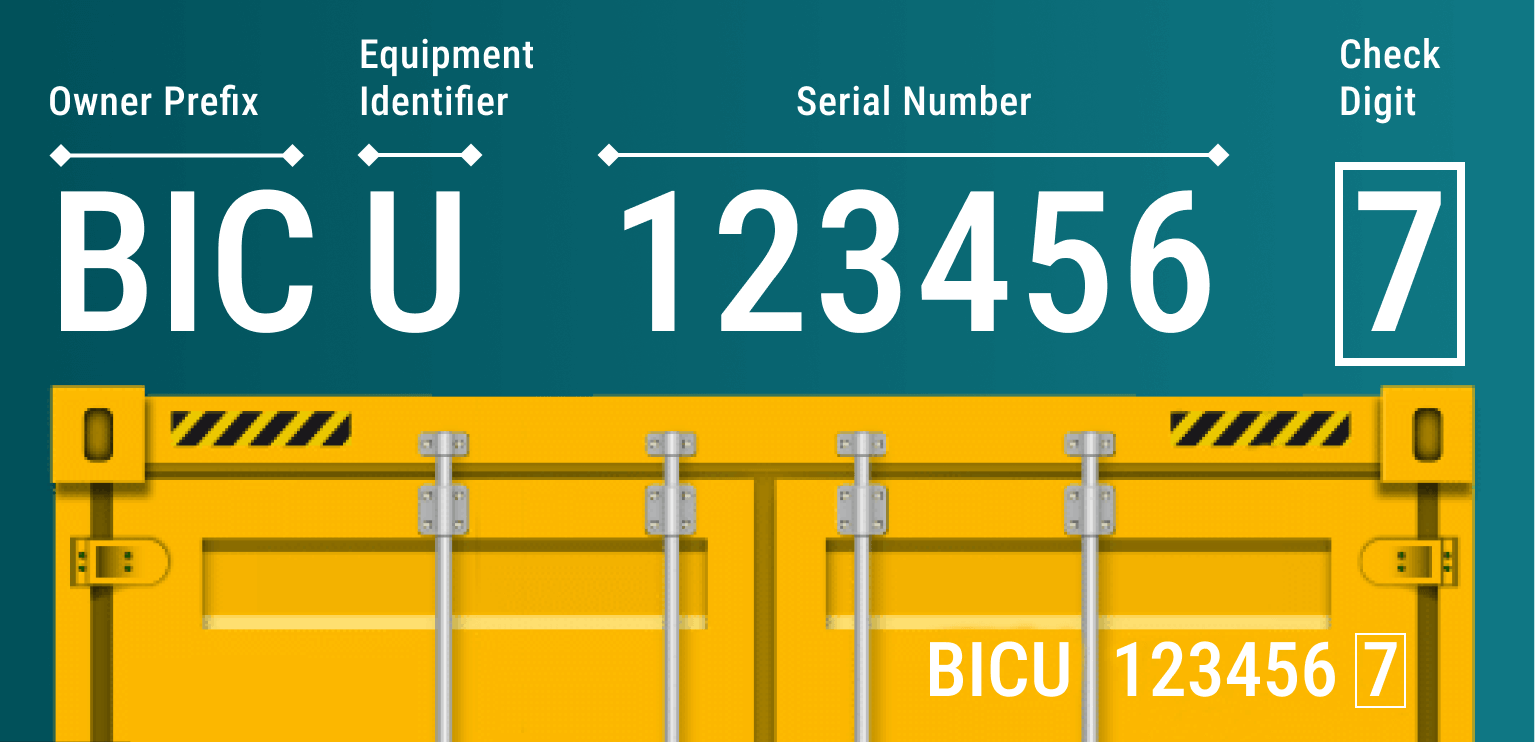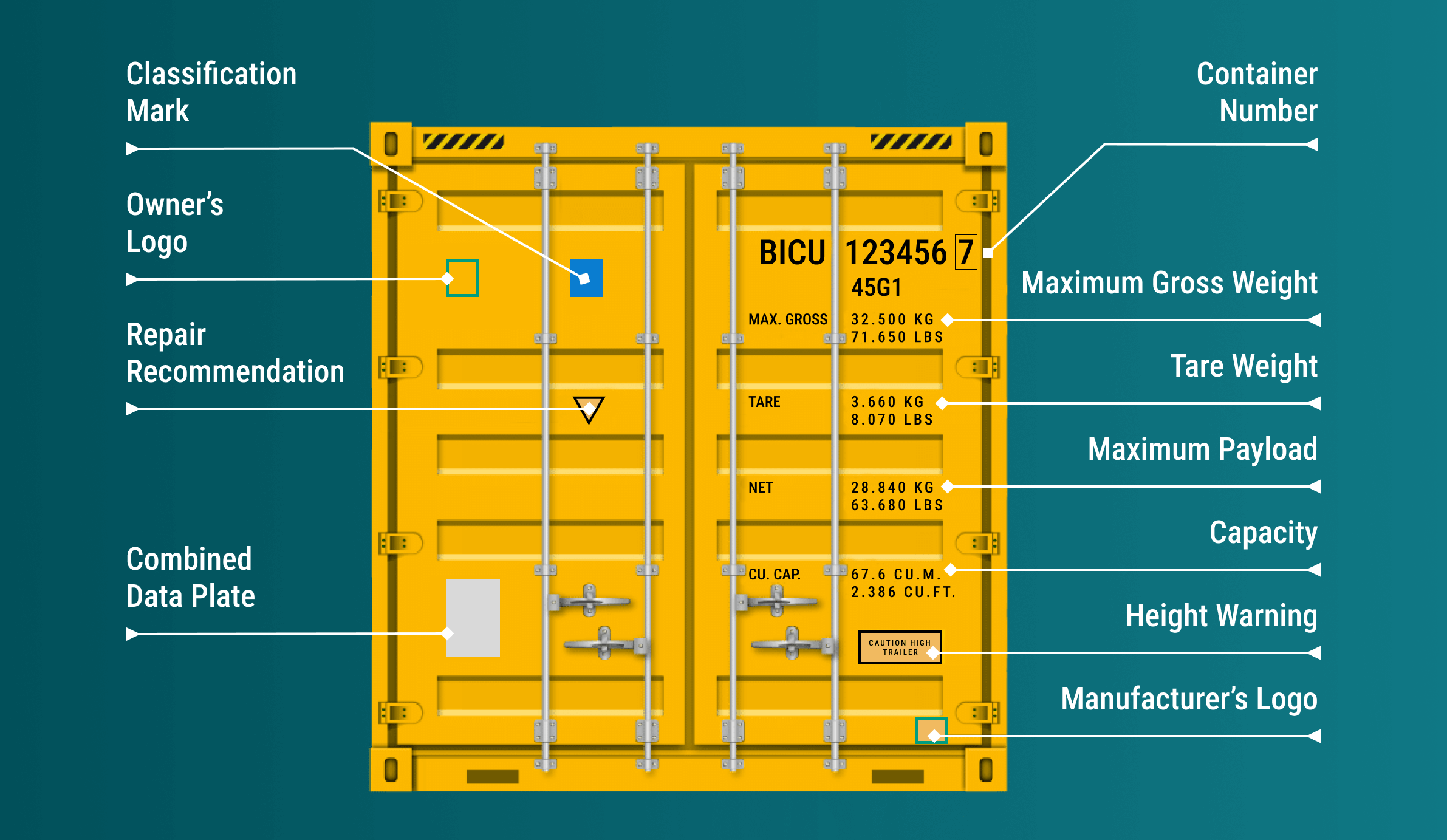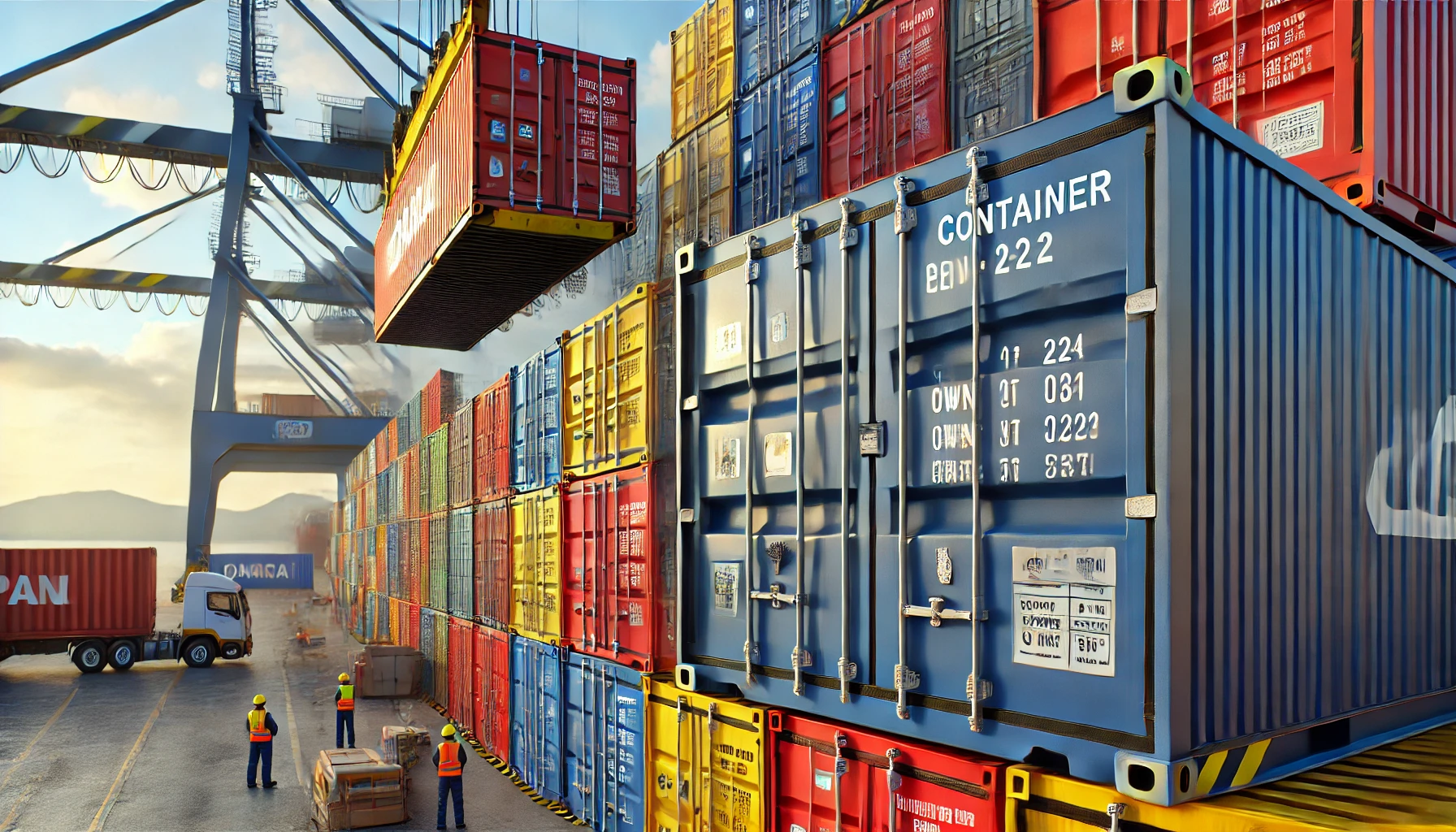The container number is a crucial element in the transportation industry. Join us in this article to learn everything about container numbers and other markings on containers.
Approximately 80% of global cargo is transported via containers. With millions of containers in circulation, how do companies identify and track their containers? This is where the role of the container number becomes clear. Each container has a unique code consisting of letters and numbers. The container number not only helps in identifying containers but is also used for tracking the container and its cargo.
Click here to view the container dimensions and capacity information booklet.
What is a Container Number?
A container number is a unique combination of four letters and seven numbers used for the international identification of containers. The International Organization for Standardization (ISO), through the Bureau International des Containers (BIC), assigns this number to each container. BIC follows the ISO 6346 standard when allocating container numbers.
A container number provides valuable information about the cargo, ownership, and status of the container. Read on to understand how.
Understanding the Container Number
Let’s break down each marking on containers to understand what they represent.

Container Number Components
-
Owner Code: The first three uppercase letters of the container number represent the owner code, identifying the company that owns the container. For example, “MAEU” is the owner code for Maersk.
-
Equipment Category: This letter appears immediately after the owner code. In our example, “U” indicates a freight container. Other codes include:
- “Z” for trailers and chassis,
- “J” for movable container-related equipment,
- “R” for refrigerated containers.
This letter, combined with the owner code, forms the Alpha Prefix.
-
Serial Number: This is a unique six-digit number assigned by the container owner. For example, “123456” represents a container’s serial number. The owner can generate up to a million unique combinations.
-
Check Digit: The final number, placed separately on the right, is called the check digit. In our example, “7” serves as the check digit, calculated using a formula based on the previous numbers to verify the container number’s validity.
-
ISO Code: This code, usually found below the container number, consists of four letters or numbers and provides details about the container type and dimensions.
- The first character represents the length.
- The second character indicates the width or height.
- The third and fourth characters define the container type.

Abbreviations for Container Types
Below are some key abbreviations used for different container types:
- ST (Standard), GP (General Purpose), DV (Dry Van): Standard or dry containers.
- HC (High Cube): Taller containers.
- PW (Pallet Wide): Larger-than-standard containers.
- OT (Open Top): Containers with an open top.
- HT (Hard Top): Containers with a removable metal roof.
- UP (Upgrade): Reinforced containers with increased durability.
- FR (Flat Rack), PL (Platform): Flat rack containers.
- RF (Refrigerated): Refrigerated containers.
Additional Information on Containers
Additional markings on containers, known as mandatory signs, provide essential information required for their movement and handling. These include visual warnings as well.
Key Container Markings
-
Gross and Net Weight:
- Gross weight indicates the maximum loaded weight of a container.
- Net weight represents the weight of the empty container.
-
Payload Capacity:
- This is the maximum cargo weight a container can carry, calculated as the difference between the gross weight and net weight.
-
Dimensions:
- This figure indicates the maximum cargo volume that can fit inside the container.
-
Height Warning:
- Containers taller than 2.6 meters are labeled with a height warning.

Leave a Reply